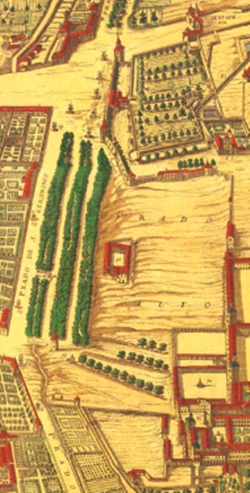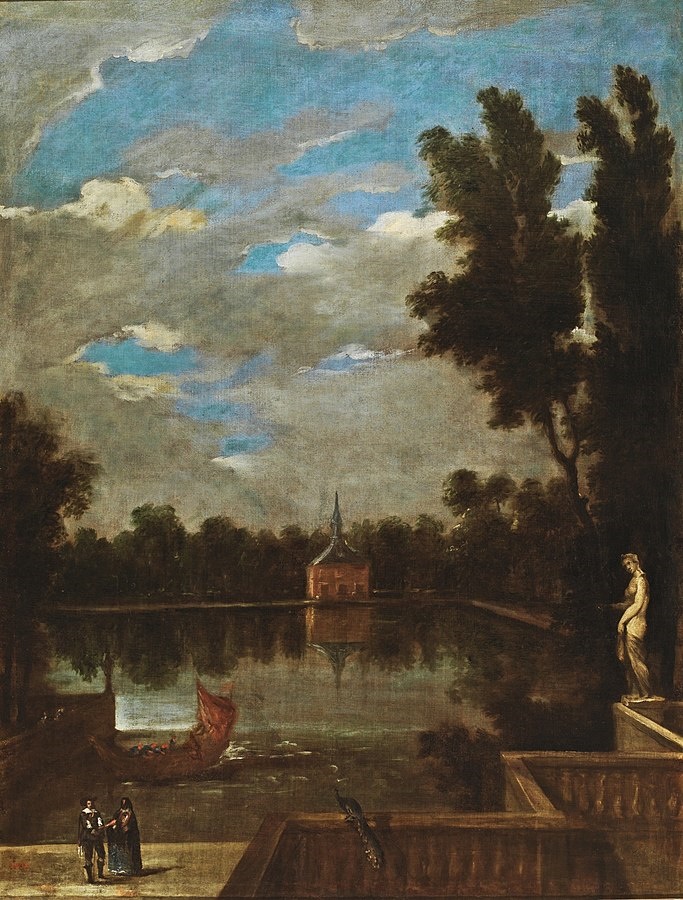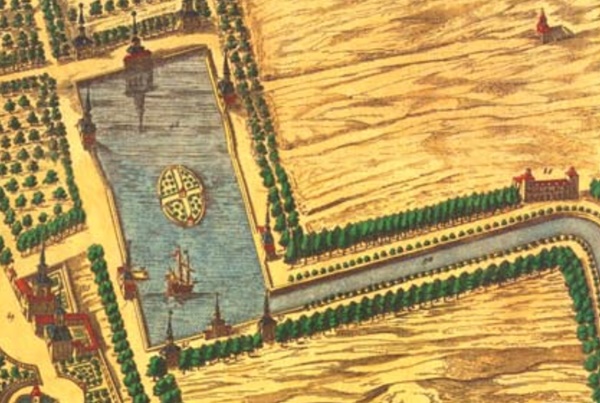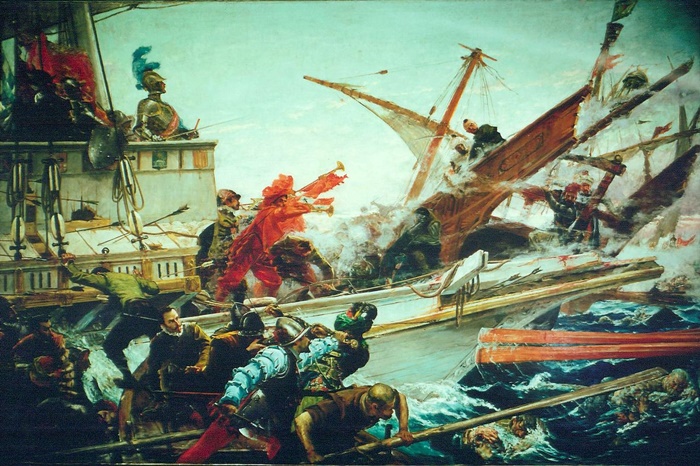A kind of legend says that during the time of Philip II, naval battles were held in a lagoon on the outskirts of Madrid, even replicating the Battle of Lepanto.
Being sensible, the chronicle states several accurate facts:
-The event took place on the field of Monastery of Los Jerónimos, which was either a land enclosed by the Hieronymite monks, or (as seems more likely) was on public land and therefore on what we today call Paseo del Prado, as it is said to have been next to the five fountains which He had built. Madrid's town hall and this were located between what today would be Cybele and Neptune. In fact, these would be the sources Cervantes talks about in the Travel to Parnassus).
-There was one at that reception theater performance of the siege to an artificial Moorish castle placed in an equally ephemeral pond. If this pond had been located on Paseo del Prado, it would have been easy to supply it with the water that came down from the Castellana Fountain.

The logical thing is to think that that show took place here, on Paseo del Prado.
-Than a front desk in which the Queen greeted all the then politicians of the Madrid City Council.
That is, the spectacle of 1570 would be more like actors splashing around in a pool than a naval battle with ships everywhere. Furthermore, it is striking thatMancelli's card (dated 1622) does not indicate a lagoon or pond before the Retiro.
It is then, when it is built pension, in the 1630s, when real shows began to be seen on the pond. An island in the middle is used for lavish shows. Such is the case in a comedy by Circe in which the island turned from a mountain into a crystal palace, to the amazement of the spectators, especially the kings who enjoyed it in gondolas.

The nocturnal comedies with light, hydraulic devices, music and color must have been a real spectacle.
A precedent for these water theaters were the gardens of the island, in Aranjuez, where several theatrical works had been created years earlier, such as the Glory of Niquea (1622), in which of course only the nobility participated. In the Retiro, however, this mentality changes, and in rare cases, such as in the year 1639, when the Count, Duke of Olivares, allowed the common people to pass through.
That year some shows had to be canceled due to the risk of bad weather, but the following year the shows were canceled St. John's Night in 1640 adversity loomed for the spectators who had to protect themselves from a tornado as it was carried out.
The following year, on the night of San Juan, there was a whirlwind that paralyzed the comedy “Competition of love and jealousy” by Calderón. And another time, in 1636, a leak in one of the ponds caused the water to disappear and the gondola with the kings to land on the bottom with all the consequences that entailed.

Retiro pond according to the Texeira map.
The naumachias As such, we should look for them in that 16th century, in the Texeira map in which you can see one of those boats, but if we look closely at it we will realize that it was very small to get an idea that the Bell Pond would fit.
We also received specific news from another ship about its manufacture in Seville and that is as strange as it may seem in 1638. He traveled from Seville to Madrid. He arrived in August 1638 with the name The Holy King Don Fernando and in whose distinction they say that Zurbarán himself took part.
Other boats were gifts from the nobles, such as the gondolas which the Duke of Medina de las Torres sent from Naples. Although an important fact is that in the Retiro there was a shipyard, that is, a building for building ships located at the current confluence of the Paseo de Venezuela and the Paseo de Coches (very close to the Book Fair).
